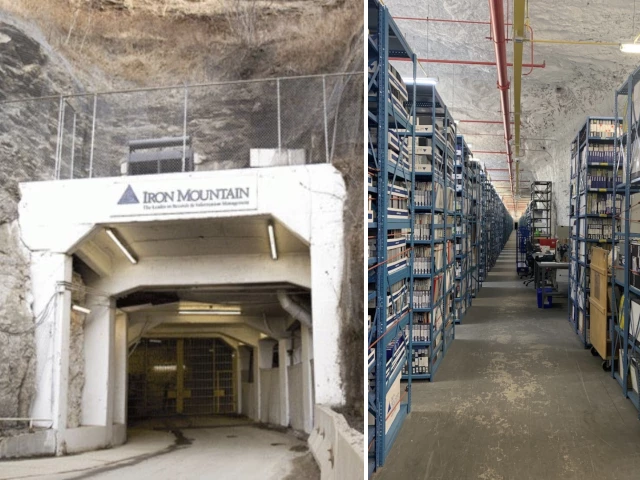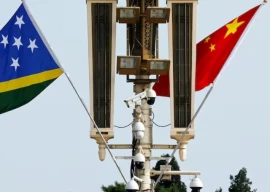
During a press conference on Tuesday afternoon, President Donald Trump and Elon Musk shared a bizarre exchange, with Musk making an unexpected mention of a “limestone mine” where federal retirement paperwork is processed.
The mine in question, as Musk described, is not a hypothetical facility but a real location called Iron Mountain, situated in Boyers, Pennsylvania. It plays a central role in processing federal employee retirement applications, a process that remains remarkably analog, despite various efforts to modernize.
WILD. Elon says the most number of people that can retire in a month is 10,000 because the government uses a limestone mine to hold all retirement paperwork which is done manually and stored via a shaft‼️ pic.twitter.com/MgMK9DlZyq
— Libs of TikTok (@libsoftiktok) February 11, 2025
According to Mediaite, Iron Mountain, a 330,000-square-foot data center located more than 200 feet underground, operates in a manner similar to how Musk described it. The facility houses a team of over 700 workers who manually process around 10,000 federal retirement applications each month. These applications are stored in manila envelopes and cardboard boxes, with the work conducted in eight massive file caverns.
According to Musk’s Department of Government Efficiency (DOGE), the mine is the reason federal retirement processing is so slow. The process is limited by how quickly an elevator can transport workers through the mine shaft, which can take months to complete.
Federal employee retirements are processed using paper, by hand, in an old limestone mine in Pennsylvania. 700+ mine workers operate 230 feet underground to process ~10,000 applications per month, which are stored in manila envelopes and cardboard boxes. The retirement process… pic.twitter.com/dXCTgpAWLs
— Department of Government Efficiency (@DOGE) February 11, 2025
The facility has reportedly been operational since the mid-20th century, with the government initially selecting the mine for its secure, cool environment. In fact, the mine’s climate, which is naturally cool and protected from weather and external threats, was seen as ideal for storing sensitive documents. Iron Mountain was originally a private company, and over time, it became a hub for not only federal retirement processing but also the preservation of old Hollywood movie reels and photographic archives.
NEW: Elon Musk says the maximum amount of people who can retire from the federal government in a month is 10,000 because the paperwork is done manually at an old limestone mine in Pennsylvania.
— Collin Rugg (@CollinRugg) February 11, 2025
The mine in question is Iron Mountain.
"The speed at which the mine shaft elevator… pic.twitter.com/rgjDqoPbL4
Despite the advantages of the mine’s location and climate, the real issue lies with the outdated methods used for processing paperwork. Previous attempts to digitize the process have been met with failure, resulting in millions of dollars spent without success.
A 2021 report highlighted how the government had invested over $106 million in efforts to modernize the system, but these attempts proved ineffective. As a result, the retirement process remains largely manual, with employees still relying on physical signatures and paper printouts.
In a 2014 report, investigative journalist David Fahrenthold of The Washington Post referred to it as a “Sinkhole of Bureaucracy.” He detailed how the outdated methods and physical storage led to significant delays in processing retirement claims for federal employees.





















COMMENTS
Comments are moderated and generally will be posted if they are on-topic and not abusive.
For more information, please see our Comments FAQ